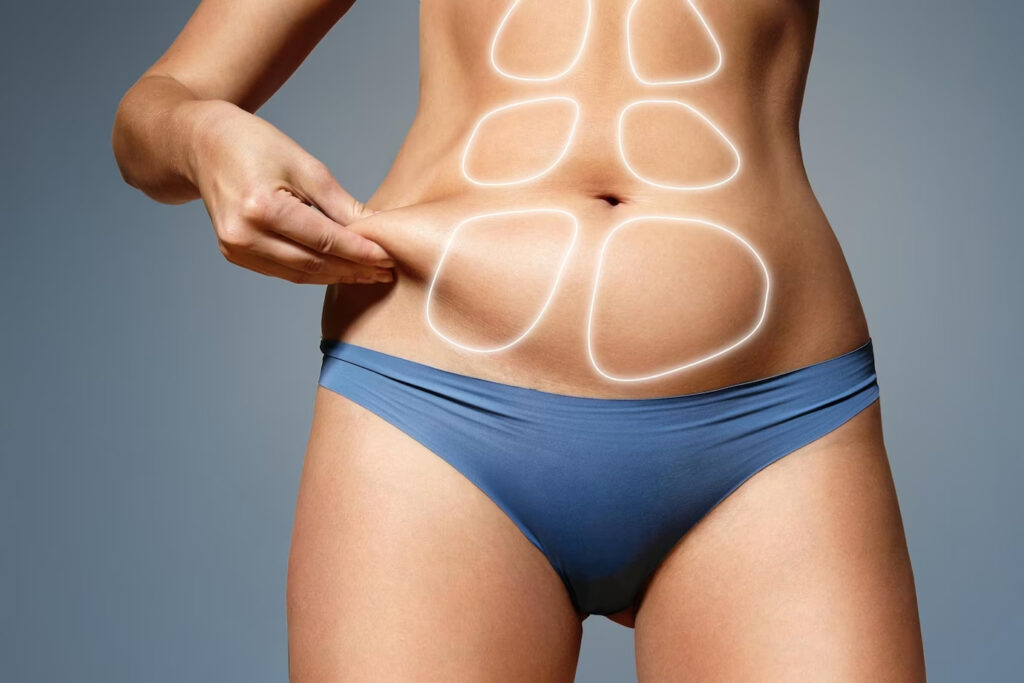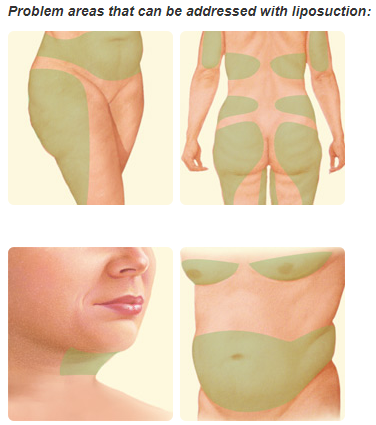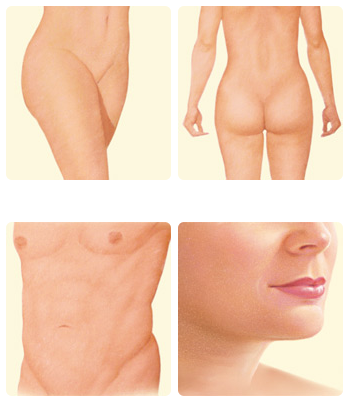Liposuction in Memphis
Liposuction slims and reshapes specific areas of the body by removing excess fat deposits and improving your body contours and proportion.
Liposuction techniques may be used to reduce localized fat deposits of the:
- Thighs
- Hips and buttocks
- Abdomen and waist
- Upper arms
- Back
- Inner knee
- Chest area
- Cheeks, chin, and neck
- Calves and ankles
Liposuction can be performed alone or along with other plastic surgery procedures, such as a facelift, breast reduction, or a tummy tuck.

Is it right for me?
If you are bothered by excess fat deposits – located anywhere on your body – that don’t respond to diet or exercise, liposuction may be right for you.
Ideal candidates for liposuction are:
- Adults within 30% of their ideal weight who have firm, elastic skin and good muscle tone
- Healthy individuals who do not have a life-threatening illness or medical conditions that can impair healing
- Non-smokers
- Individuals with a positive outlook and specific goals in mind for body contouring
Liposuction is not a treatment for obesity or a substitute for proper diet and exercise. It is also not an effective treatment for cellulite-the dimpled skin that typically appears on the thighs, hips, and buttocks-or loose saggy skin.
Consultation and Preparing for Surgery
- Your surgical goals
- Medical conditions, drug allergies, and medical treatments
- Current medications, vitamins, herbal supplements, alcohol, tobacco, and drug use
- Previous surgeries
Your surgeon will also:
- Evaluate your general health status and any pre-existing health conditions or risk factors
- Take photographs
- Discuss your liposuction options
- Recommend a course of treatment
- Discuss likely outcomes of liposuction and any risks or potential complications
Prior to surgery, you may be asked to:
- Get lab testing or a medical evaluation
- Take certain medications or adjust your current medications
- Stop smoking
- Avoid taking aspirin, anti-inflammatory drugs, and herbal supplements as they can increase bleeding
Liposuction should be performed in an accredited office-based surgical facility, licensed ambulatory surgical center, or a hospital. Be sure to arrange for someone to drive you to and from surgery and to stay with you for at least the first night following surgery.
Be sure to ask questions. It’s very important to ask your plastic surgeon questions about liposuction. It’s natural to feel some anxiety, whether it’s excitement for your anticipated new look or a bit of preoperative stress. Don’t be shy about discussing these feelings with your plastic surgeon.
The Procedure


Risks and Safety
The decision to have liposuction is extremely personal. You will have to decide if the benefits will achieve your goals and if the risks and potential complications are acceptable. You will be asked to sign consent forms to ensure that you fully understand the procedure and any risks and potential complications.
The risks include:
- Anesthesia risks
- Bruising
- Change in skin sensation that may persist
- Damage to deeper structures such as nerves, blood vessels, muscles, lungs, and abdominal organs
- Deep vein thrombosis, cardiac and pulmonary complications
- Fluid accumulation
- Infection
- Irregular contours or asymmetries
- Irregular pigmentation
- Need for revision surgery
- Persistent swelling
- Poor wound healing
- Rippling or loose skin, worsening of cellulite
- Swelling
- Thermal burn or heat injury from ultrasound with the ultrasound-assisted lipoplasty technique model
These risks and others will be fully discussed prior to your consent. It is important that you address all your questions directly with your plastic surgeon.
Recovery After Surgery
Once your procedure is completed, a compression garment or elastic bandages may cover treatment areas. These help to control swelling and compress the skin to your new body contours. In addition, small temporary drains may be placed in existing incisions beneath the skin to remove any excess blood or fluid.
You will be given specific instructions that may include how to care for the surgical site and drains, medications to apply or take orally to aid healing and reduce the potential for infection, specific concerns to look for at the surgical site or in your general health, and when to follow up with your plastic surgeon.
Be sure to ask your plastic surgeon specific questions about what you can expect during your individual recovery period:
- Where will I be taken after my surgery is complete?
- What medication will I be given or prescribed after surgery?
- Will I have dressings/bandages after surgery?
- How long will I wear the compression garment?
- Are stitches removed? When?
- When can I resume normal activity and exercise?When do I return for follow-up care?
It may take several months for the swelling to fully dissipate. As it does, your new contours and enhanced self-image should continue to develop.
Results
Your improved body contour will be apparent when the swelling and fluid retention commonly experienced following liposuction subside.
The results of liposuction will be long lasting, provided that you maintain a stable weight and general fitness. As your body ages, it is natural to lose some firmness, but most of your improvement should be relatively permanent.
Although good results are expected from your procedure, there is no guarantee. In some situations, it may not be possible to achieve optimal results with a single surgical procedure and another surgery may be necessary. It is not possible to improve lax skin tone with liposuction.
Following your physician’s instructions is key to the success of your surgery. It’s important that the surgical incisions are not subjected to excessive force, swelling, abrasion, or motion during the time of healing. Your doctor will give you specific instructions on how to care for yourself.
Robert Wallace MD
“Dr. Robert D. Wallace has been recognized for many years as one of the best plastic surgeons in the United States and has an international reputation for his work in craniofacial, cleft, and cosmetic surgery. He has been on Castle Connelly’s Top Doc list and Best Doctors award for many consecutive years. In addition, he was selected by Newsweek magazine in 2021 and 2022 as one of the top 100 plastic surgeons in the USA on their list for facelift and rhinoplasty surgery. In 2022 he was honored by Memphis Business Journal with the Healthcare Hero award in the physician category for his work in pediatric and craniofacial surgery. He has published multiple medical articles and book chapters in plastic surgery literature.”

Schedule your Liposuction treatment in Memphis
If you have any questions or want to schedule an appointment, contact us and our team will be glad to support you